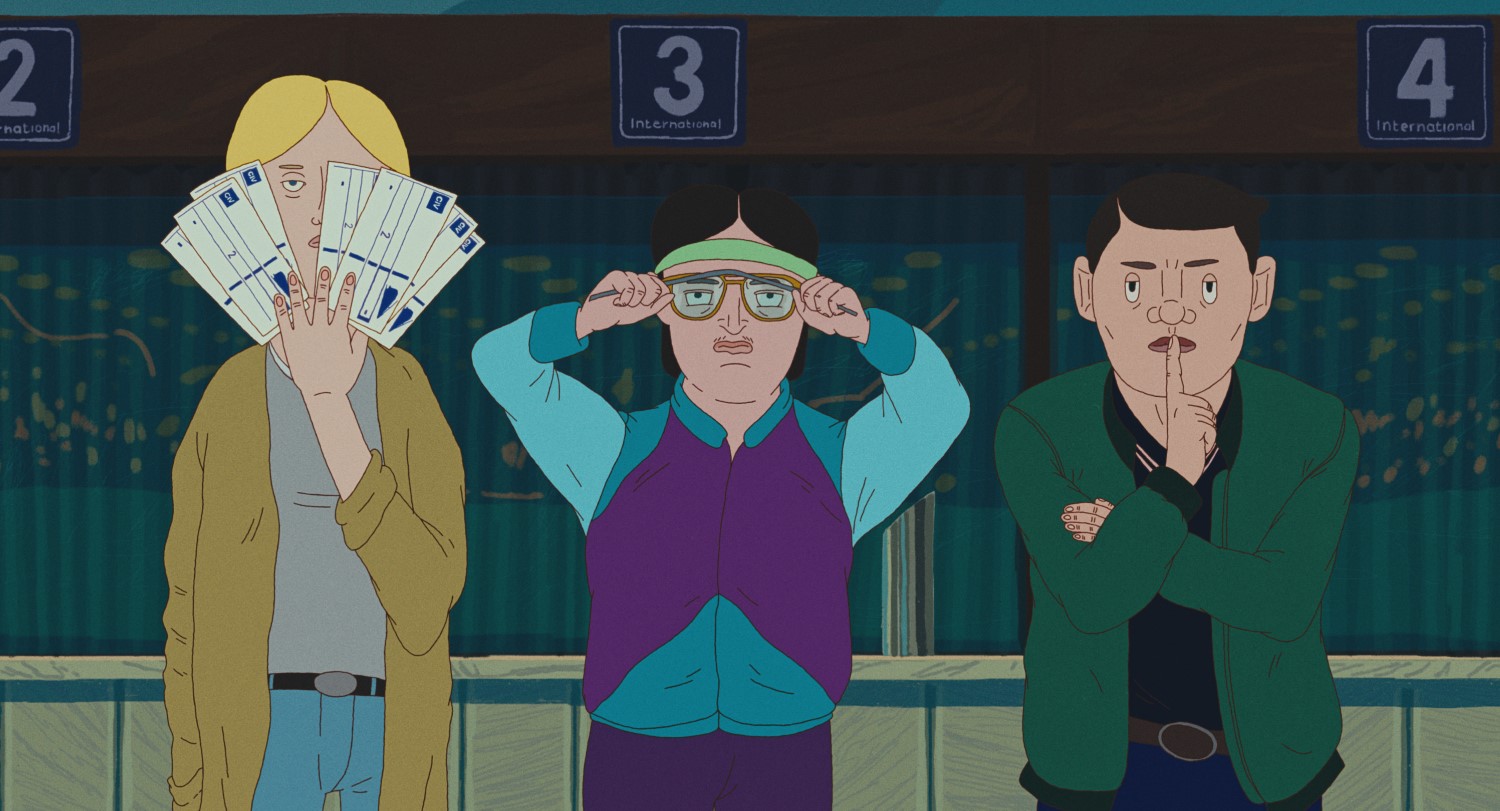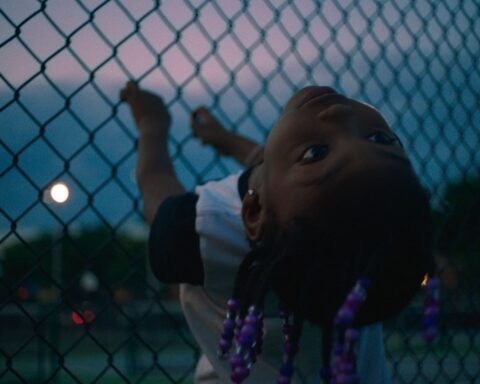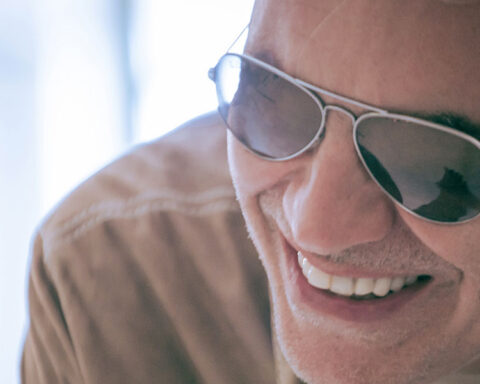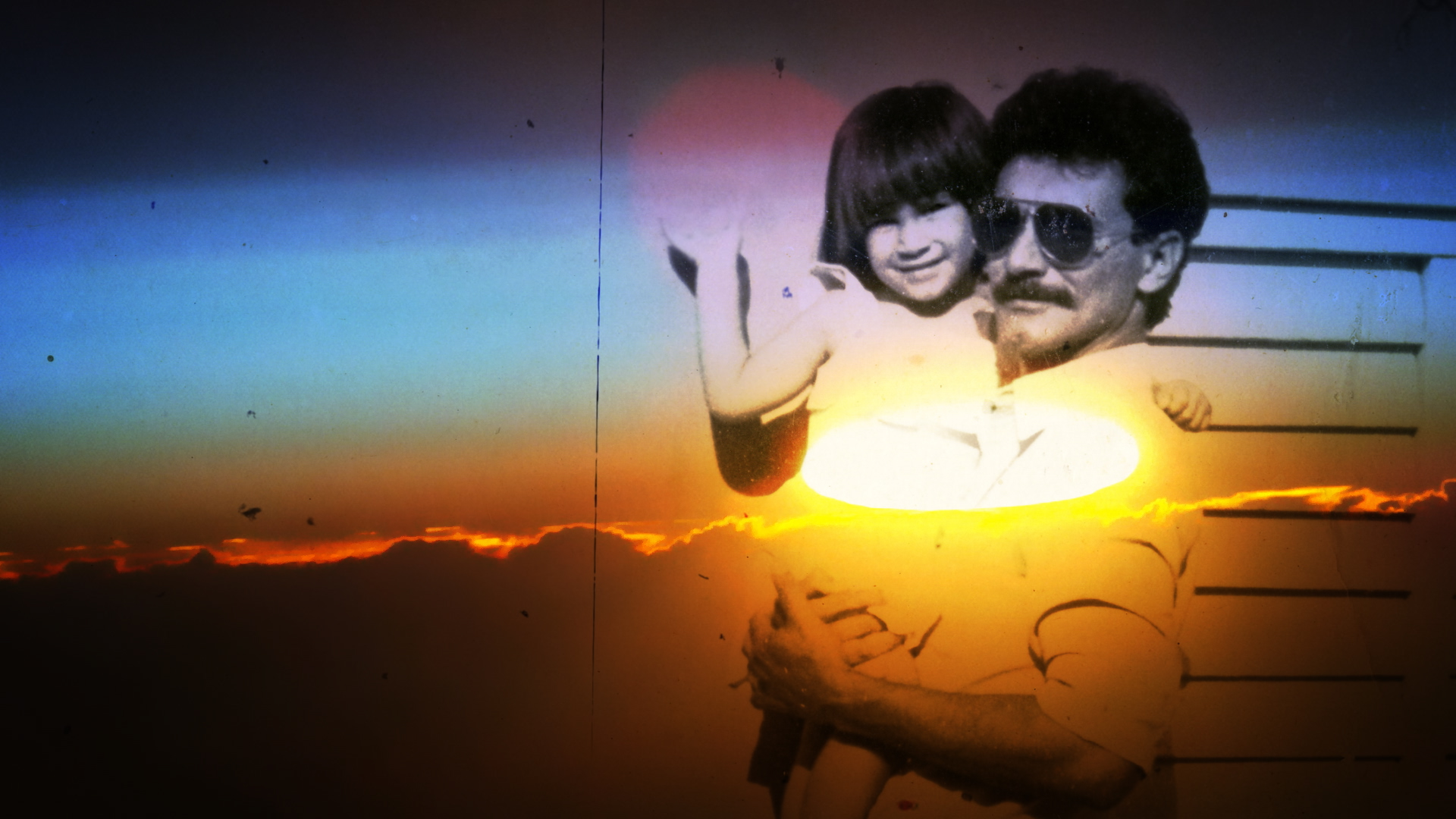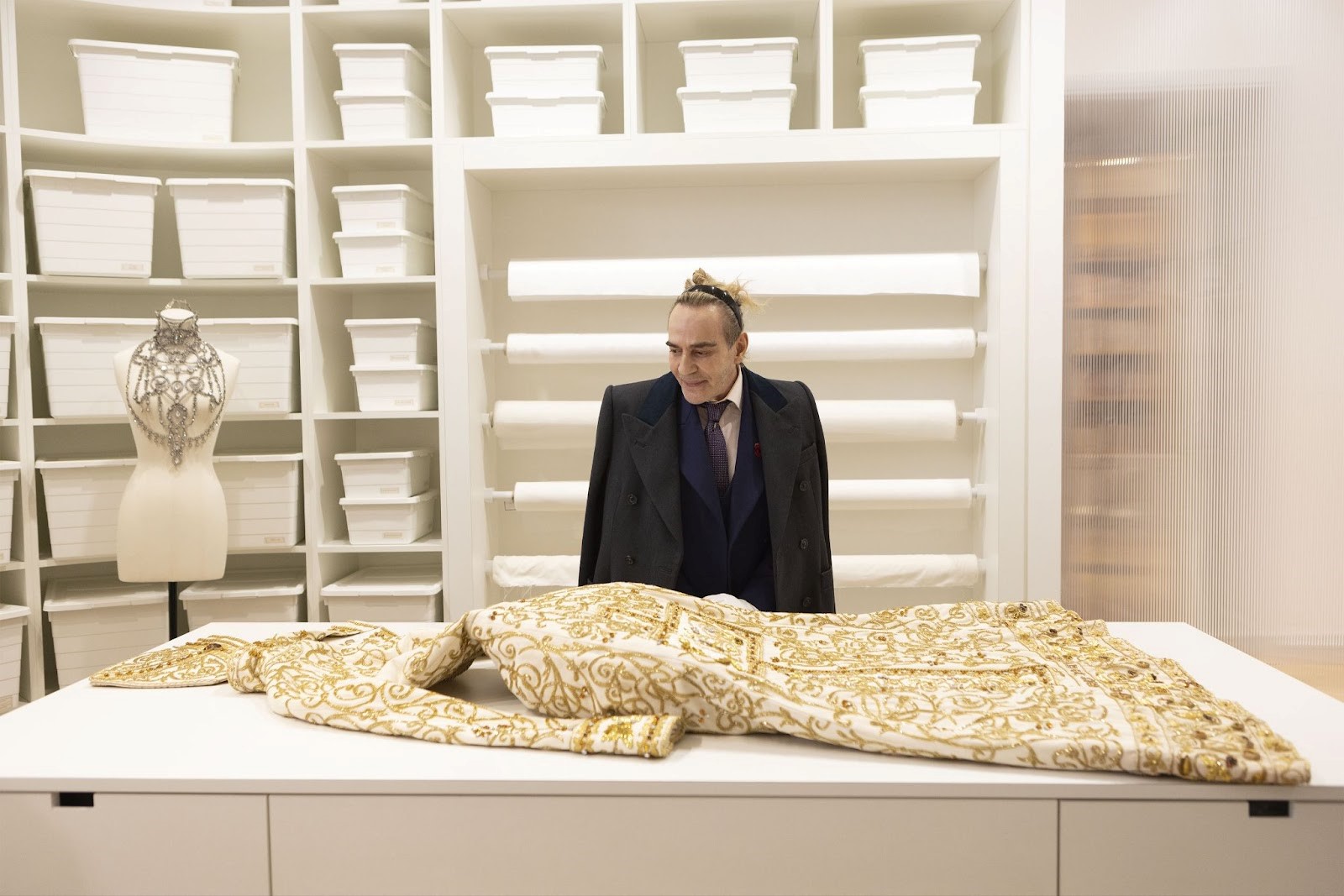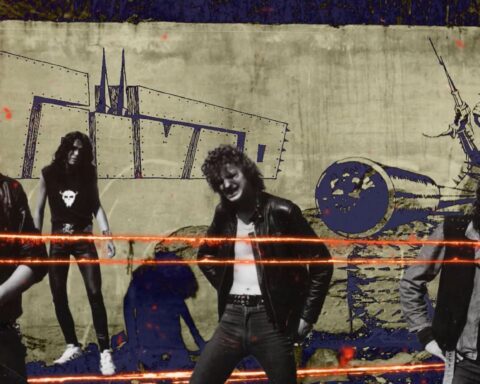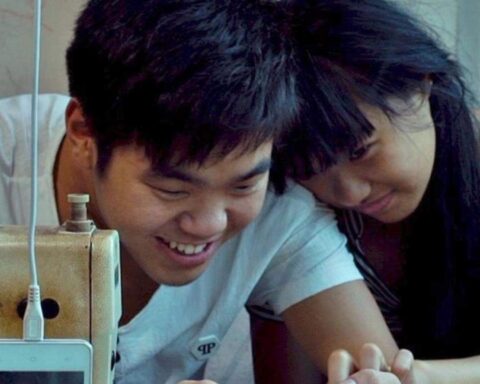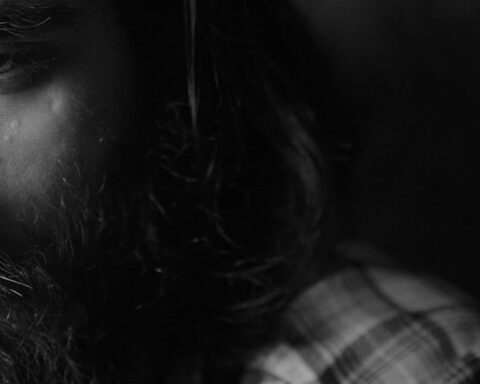“My mother told me that stealing from another man is a crime, but stealing from the state is glorious,” says one of the memorable forgers in Pelikan Blue. This animated documentary feature—the first production of its kind from Hungary—brings an extraordinary caper to Hot Docs. Pelikan Blue, which has its North American premiere in The Changing Face of Europe programme, introduces audiences to three forgers who used their wily craft to help fellow travellers who couldn’t afford the price of freedom after the fall of the Iron Curtain.
Directed by László Csáki and produced by Ádám Felszeghy and Miklós Kázmér, Pelikan Blue imaginatively uses the creative spirit that helped the three forgers put their skills to use in the 1990s. The film features forgers Ákos, Petya, and Laci in audio interviews as they describe how they conned the state railway system using ordinary household detergents. The forgers tell how the cleaning products let them dissolve the Pelikan’s blue ink on train tickets, which they would then manipulate to let Hungarians eager to experience freedom explore life beyond the wall.
Using an eclectic and frequently humorous animation aesthetic, which drolly evokes the style of the 1990s sitcom Beavis and Butt-head. While the stories of the forgers and their fellow travellers have an anarchic, darkly funny tone, the absence of their physical selves illustrates the challenges for mobility in a land that professes to be free. It’s a unique portrait of life behind the Iron Curtain and the hunger to have the independence that was promised while the Curtain’s shadow lingers.
POV spoke with Pelikan Blue producer Ádám Felszeghy via Zoom ahead of the film’s North American premiere at Hot Docs. We discussed Pelikan Blue’s long journey to becoming an animated documentary, the key elements that inspired its construction, and the tough sell of animated docs in an ever-changing market.
POV: Pat Mullen
AF: Ádám Felszeghy
This interview has been edited for brevity and clarity.
POV: Can you tell me about the story of Pelican Blue and how you to discover it?
AF: It dates back to 2006, so it’s a quite long story. It’s Hungary’s first animated documentary, and I came across the project in 2018. Back then, I saw a 22-minute animated version of the film, which I found very interesting. Before that, the other producer, Miklós Kázmér, developed the project. That was the time [2018] when we decided to make it a feature-length animated documentary. The film is about international train ticket forgery in 1990s’ Hungary and, back then, we had those three characters. I was suggesting to the others to find the policeman who was investigating this story. I also wanted to listen to workers from the state railways back in the 1990s.
We applied for the incubator program of the Hungarian National Film Institute. Back then, it had a different name, but it’s a first-time filmmaker program for directors. When we got the support of this funding, we could start developing the story as a documentary. We needed a lot of research and we built up the structure. Around 2021, we started the frame by frame animation because it’s a classic 2D frame by frame animation. The program is TV Paint. That process took until 2023.
POV: What are some of the documentary elements in the film?
AF: The director, László Csáki, was looking to find the perfect form for this story. Between 2006 and 2018, it was planned to be a feature film first. That was when he started to record these archive sound recordings that are actually in the film. But, back then, they were only research material. Nobody thought that we are going to use that in the actual film. But we did, because later on, it turned out that the subjects of the film are speaking very well. They have very original voices, very original stories, and we wanted to use the film with their own voices because that was so authentic and so original. That’s how we came across this genre of animated documentary, and that’s why László chose this form instead of a feature film or a documentary without animation.
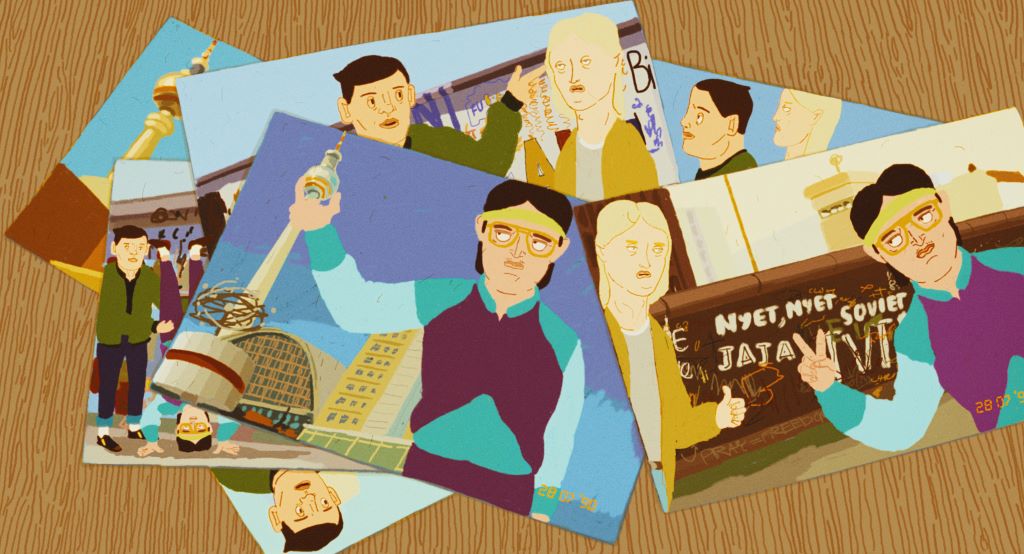
POV: What did you use as reference points for the visuals and the animation?
AF: Actually, our starting point was the audio recordings. We recorded more than 40 hours of interviews with the train ticket forgers, with travellers who used forged train tickets, with the employees of the state railways back in the 1990s, and with the authorities. We made something like a radio play, and the director started to draw the animation on that radio play. Regarding visual references. He was living in that era. He was in his twenties in 1990s’ Hungary. It mostly takes place in Budapest, so most places that are depicted in the film, he knew quite well because he was a part of that culture and part of that scene. For scenes he didn’t know or didn’t remember, he used old photos as references and maybe some paintings, but it was mostly in his head.
POV: Over the past few years in which Pelikan Blue was in production, we saw some animated documentaries come out like Waltz with Bashir, Flee, and Tower. As more animated documentary came out, did they shape your own production?
AF: We have some Hungarian roots for animated documentary as well, like György Kovásznai, but in short forms. We also noticed that there was, we can say a “trend” of animated documentaries, as you mentioned—Waltz with Bashir or Flee—and we found it interesting to try to do Hungary’s first feature length animated documentary. It was very organic how the form came from the story because most of our subjects didn’t want to reveal their true identities. They didn’t want to show their faces, but they were more than happy to give their voices. So actually it was quite a no-brainer to use this form.
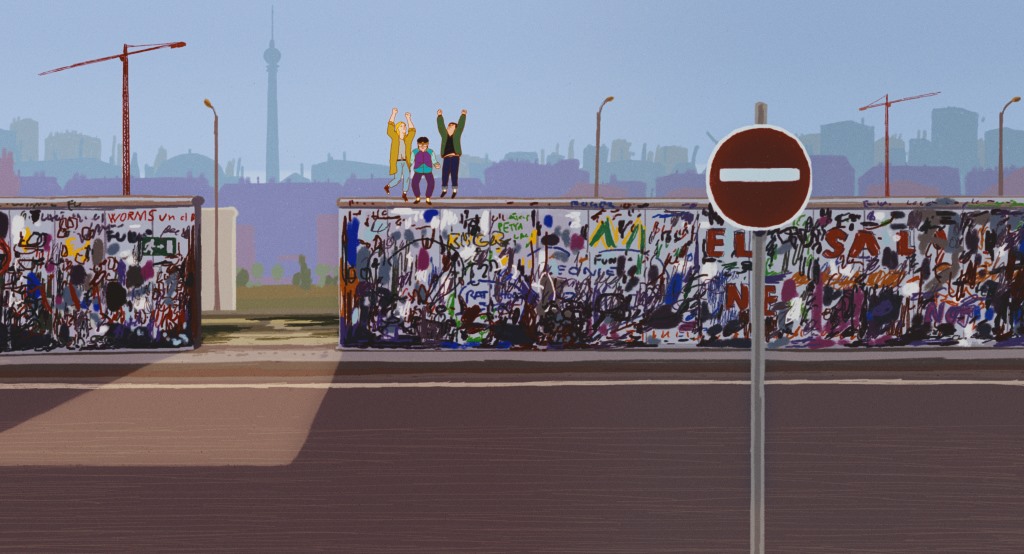
POV: If you’re looking at a story from the 1990s in 2024, what is the contemporary resonance or implications for looking at the story now?
AF: There are some universal themes in this film. For example, the desire for freedom. It’s absolutely universal. In the ’90s, it was a hot topic because the Iron Wall had just collapsed. We had a regime change in Hungary, and people were finally free to travel to Western Europe. Everybody wanted to travel and the freedom to travel was very new, but it was very expensive. I think this topic is quite relevant right now for a lot of people living Hungary, but also Central Europe or Eastern Europe.
Of course, for Gen Z or the Alpha Generation, it is more difficult to understand. But we also wanted to depict a picture [of the period]. For example, we have a lot of objects in the film, which we actually filmed on Super 8mm film. So we show them only animation, but it’s also shot on film. You can see, for example, the old school telephones, the old mobile phones, or notebooks, or cassettes that we don’t really have anymore. That gives younger generations a little insight about how teenagers or people in their twenties lived in the 1990s.
POV: The Changing Face of Europe program at Hot Docs offers different films from across Europe. How does it feel to be representing Hungary?
AF: It’s a great honor. We are very happy to be present at North America’s biggest documentary event. We are also [participating] at the industry days, and European Film Promotion helps us with that, which is a great opportunity because to be honest, it is very hard to sell. Animated documentary is a genre that is very, very difficult to sell. I’ve talked to several sales agents and I’ve been to several development workshops with this project, and everybody told me that this is a very interesting topic, this is a very interesting form, but it is impossible to sell.
POV: Even after Flee?
AF: I even talked to the sales house of Flee, actually, and they told me that Flee, financially, was a catastrophe. It was highly recognized at many festivals and it received a lot of awards, but it was very difficult to bring it to the audience. Hot Docs can help us, of course. We have quite a nice festival circuit: we premiered at Tallin Black Nights Film Festival. We’ve been to Biarritz, Thessaloniki. We are selected to Belgrade Docs and we have a lot of festivals coming up. But I think Hot Docs has huge prestige, and also it has a market, which is very important in our case because we will be very happy to share this film with international audiences. I think that’s the most important issue for us right now: to deliver this film to the audience who understands it and likes it.
POV: How is the market in Hungary for Hungarian films? In Canada, we have the issue where most theaters are showing Hollywood movies and very few of them show our own cinema. How is the case in Hungary in terms of having access?
AF: It’s the same, actually, but I’m very lucky because I also have a feature film that I produced (All about the Levkoviches) while I was producing this animated film. It just came out and for four weeks we’ve been in the top 10 [at the box office]. I think, especially after COVID times, [audiences] want to see local cinema, they want to see local films and they can be brought to cinemas. You just have to find new ways to bring them to the cinemas. It’s very difficult and it requires extra effort. I think distributors have to change their habits and have to find new ways. We have to organize a lot of events with film screenings because that’s how you can mobilize audiences in Hungary. But I think that cinema in Hungary, in this year especially, is in a good shape.




